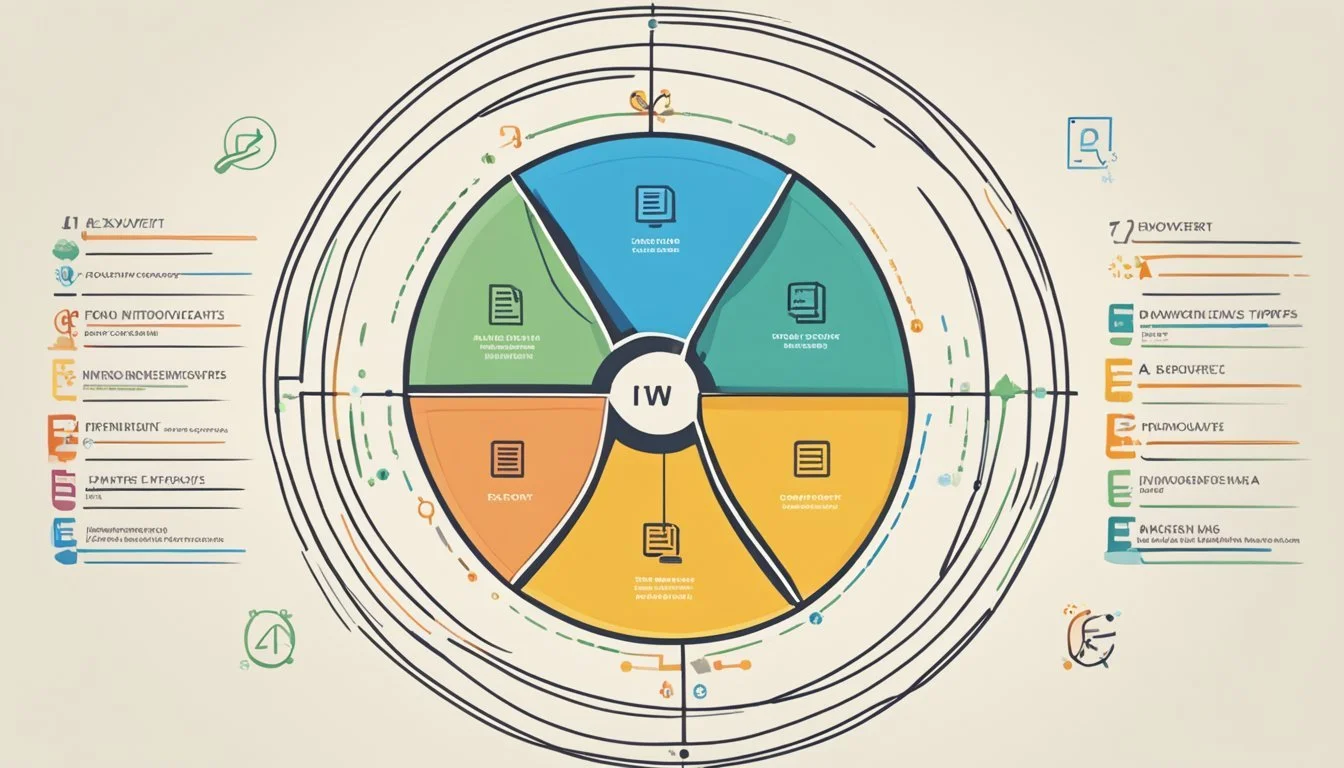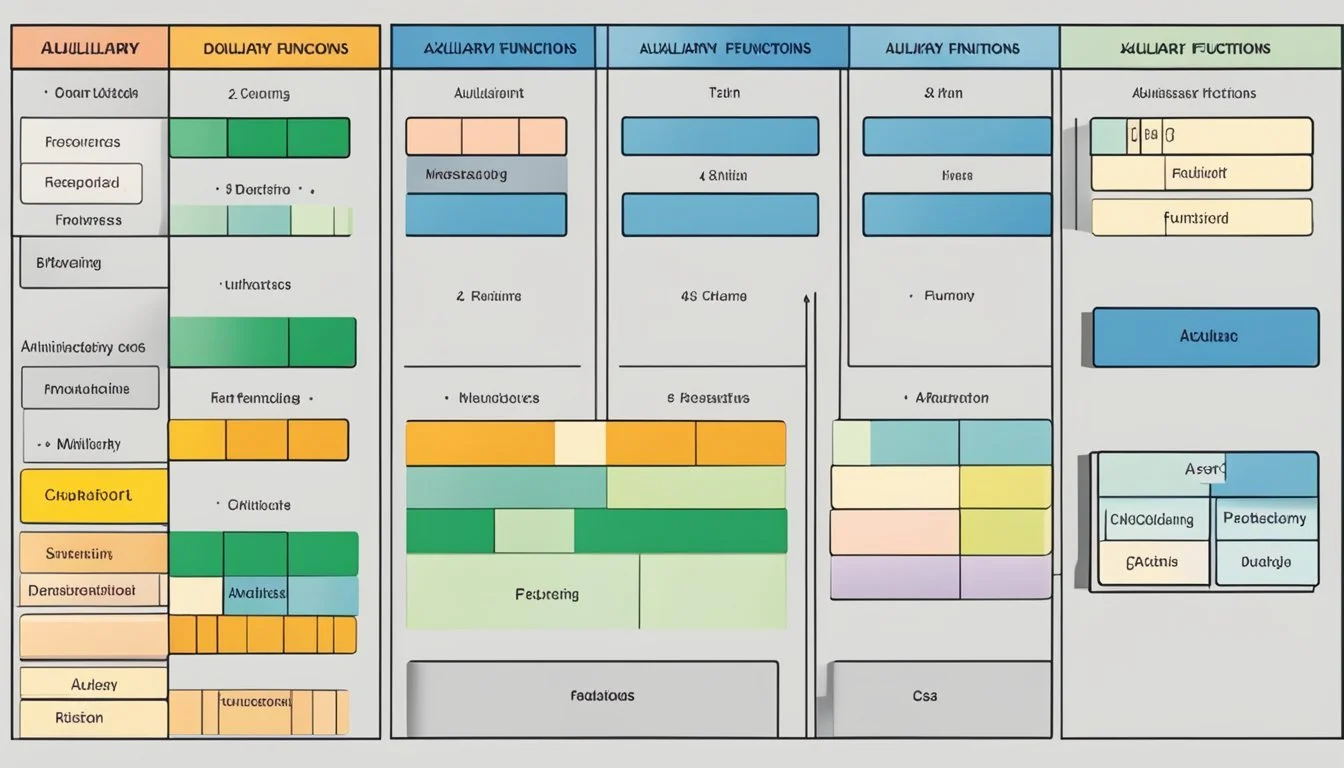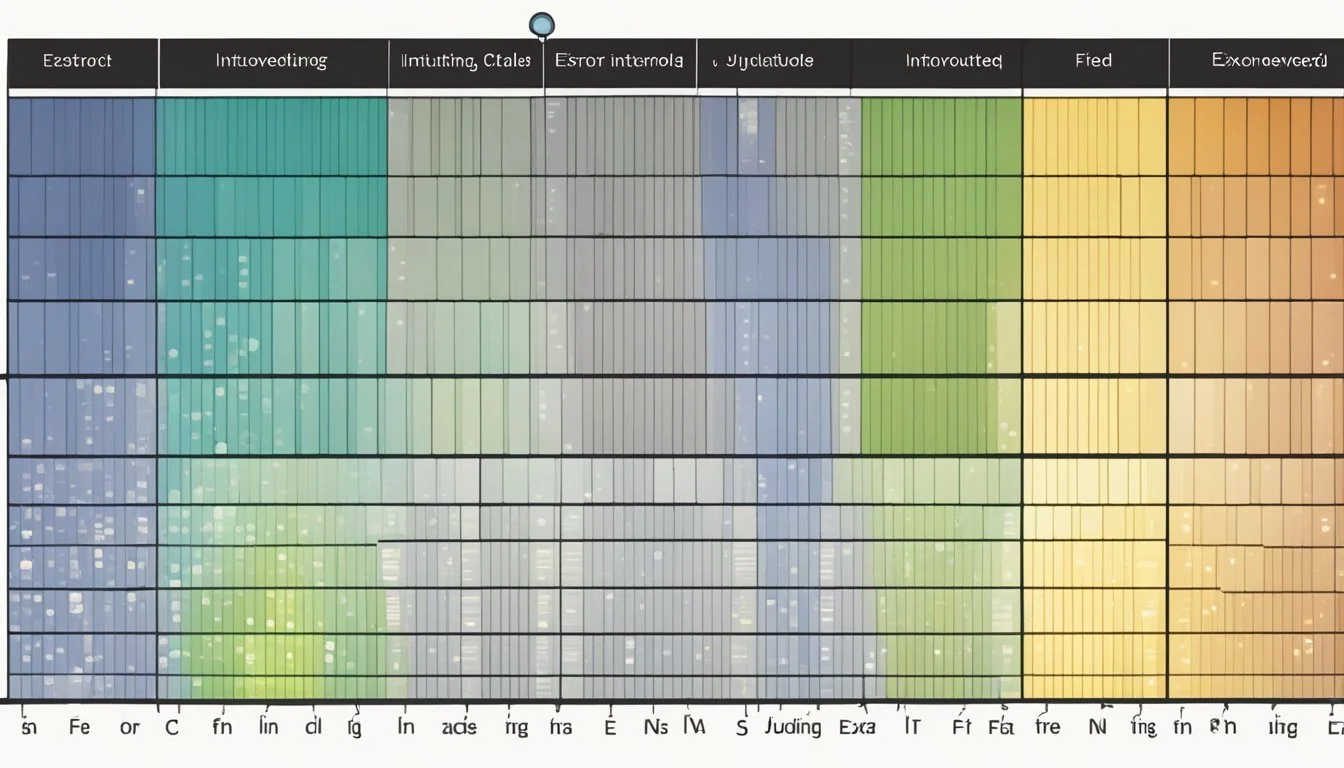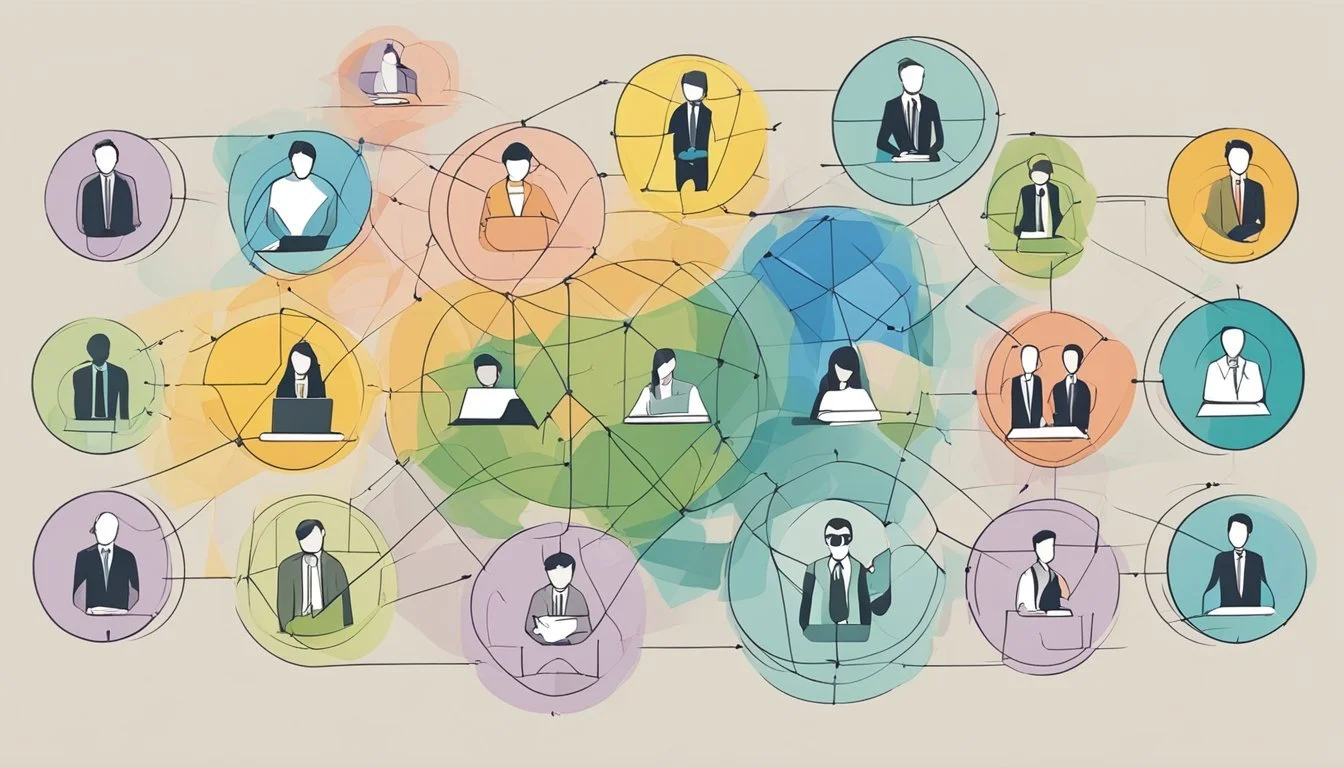Decoding Personality Types: A Comprehensive Guide to Common Abbreviations
Personality type abbreviations offer a concise way to categorize and understand different psychological preferences. These shorthand codes, often derived from systems like the Myers-Briggs Type Indicator (MBTI), provide insights into how individuals perceive the world and make decisions. The most common personality type abbreviations consist of four letters, each representing a distinct aspect of a person's cognitive functions and behavioral tendencies.
The MBTI, based on Carl Jung's theory of psychological types, uses combinations of eight preferences to create 16 distinct personality types. These preferences include Extraversion (E) or Introversion (I), Sensing (S) or Intuition (N), Thinking (T) or Feeling (F), and Judging (J) or Perceiving (P). For example, an individual classified as INTJ would be described as introverted, intuitive, thinking, and judging.
Understanding these abbreviations can help people gain insights into their own behavior and that of others. Many organizations and individuals use personality type systems to improve communication, teamwork, and personal development. While these systems provide valuable frameworks for understanding human behavior, it's important to remember that personality is complex and multifaceted, extending beyond simple categorizations.
Foundations of Personality Types
Personality typology emerged from early psychological theories and observations of human behavior. It aims to categorize individuals based on consistent patterns of thinking, feeling, and acting.
The Origins of Personality Typology
Carl Jung laid the groundwork for modern personality type systems in the 1920s. He proposed that people have innate preferences in how they perceive the world and make decisions.
Jung identified key dichotomies: extraversion vs. introversion, sensing vs. intuition, and thinking vs. feeling. These formed the basis of his psychological types theory.
Isabel Briggs Myers and Katharine Cook Briggs later expanded on Jung's work. They added a fourth dimension - judging vs. perceiving - and developed the Myers-Briggs Type Indicator (MBTI).
The MBTI became widely used in personal development and career counseling. It categorizes people into 16 distinct personality types based on their preferences across the four dimensions.
Defining Personality and Traits
Personality refers to an individual's unique pattern of thoughts, emotions, and behaviors. It shapes how people interact with the world and respond to various situations.
Traits are relatively stable characteristics that influence behavior across different contexts. They form the building blocks of personality.
The "Big Five" model identifies five broad trait domains: openness, conscientiousness, extraversion, agreeableness, and neuroticism. These traits exist on a spectrum, with individuals falling somewhere between the extremes.
Personality type systems like the MBTI focus on how people prefer to use their mental processes. They emphasize innate tendencies rather than learned behaviors or situational responses.
The Myers-Briggs Type Indicator (MBTI)
The Myers-Briggs Type Indicator is a widely used personality assessment tool based on Carl Jung's theory of psychological types. It categorizes individuals into 16 distinct personality types using four preference pairs.
Development and Structure
Katherine Briggs and her daughter Isabel Myers developed the MBTI in the 1940s. They drew inspiration from Jung's work on cognitive functions and personality types. The MBTI uses a questionnaire to assess an individual's preferences across four dichotomies.
These dichotomies form the basis of the 16 personality types. Each type is represented by a four-letter code, such as INTJ or ESFP. The code corresponds to the individual's preferences in each of the four dimensions.
The MBTI aims to help people understand their own and others' personality preferences. It is used in various settings, including personal development, career counseling, and team building.
Four Dichotomies
The MBTI is built on four dichotomies:
Extraversion (E) vs. Introversion (I)
Sensing (S) vs. Intuition (N)
Thinking (T) vs. Feeling (F)
Judging (J) vs. Perceiving (P)
Extraversion and Introversion relate to how individuals direct and receive energy. Sensing and Intuition describe how people take in information. Thinking and Feeling represent decision-making processes. Judging and Perceiving indicate how individuals approach the outside world.
These preferences combine to form the 16 MBTI types. Each type has its own set of characteristics and tendencies.
MBTI Assessment and Validity
The MBTI assessment consists of a self-report questionnaire. Individuals answer a series of questions about their preferences and behaviors. The results are then used to determine their personality type.
The MBTI is one of the most widely used psychological instruments in the world. Many organizations use it for team building and personal development. However, its scientific validity has been questioned by some researchers.
Proponents argue that the MBTI provides valuable insights into personality differences. Critics point out that the assessment's reliability and validity may not meet rigorous scientific standards.
Criticisms of MBTI
Despite its popularity, the MBTI faces several criticisms from psychologists and researchers. One main concern is the lack of empirical evidence supporting its theoretical foundations.
Critics argue that the dichotomous nature of the MBTI oversimplifies human personality. They suggest that personality traits exist on a spectrum rather than as distinct categories.
Another criticism is the potential for inconsistent results. Some individuals may receive different personality types when retaking the assessment. This raises questions about the MBTI's test-retest reliability.
Some researchers also argue that the MBTI lacks predictive validity. They claim it may not accurately predict job performance or other real-world outcomes.
Understanding the Dichotomies
The Myers-Briggs Type Indicator uses four key dichotomies to describe personality preferences. These opposing pairs form the foundation of the 16 personality types.
Extraversion vs. Introversion (E/I)
This dichotomy focuses on how individuals direct and receive energy. Extraverts (E) gain energy from social interactions and the external world. They tend to be outgoing, talkative, and enjoy group activities.
Introverts (I) recharge through solitude and inner reflection. They often prefer quieter environments and one-on-one interactions. Introverts may feel drained after prolonged social exposure.
The E/I preference influences communication styles and social needs. Extraverts typically process thoughts externally, while introverts reflect internally before sharing ideas.
Sensing vs. Intuition (S/N)
This dichotomy relates to how people gather and interpret information. Sensing (S) types focus on concrete facts and details. They rely on their five senses and prefer practical, real-world applications.
Intuitive (N) types look for patterns, possibilities, and abstract concepts. They enjoy theoretical discussions and are often future-oriented. N types may overlook details in favor of the big picture.
S types tend to be methodical and sequential in their approach. N types often make intuitive leaps and enjoy exploring novel ideas.
Thinking vs. Feeling (T/F)
This dichotomy describes how individuals make decisions. Thinking (T) types prioritize logic, consistency, and objective analysis. They aim for impartial judgments based on facts and principles.
Feeling (F) types consider personal and interpersonal factors in decision-making. They emphasize harmony, empathy, and subjective values. F types often excel at understanding others' emotions.
T types may appear detached when solving problems, while F types consider the human impact. Both approaches have strengths in different situations.
Judging vs. Perceiving (J/P)
This dichotomy relates to how people approach the external world. Judging (J) types prefer structure, planning, and closure. They like to make decisions quickly and stick to schedules.
Perceiving (P) types are flexible, spontaneous, and open-ended. They enjoy keeping options open and adapting to new information. P types may postpone decisions to gather more data.
J types often create detailed plans and feel stressed by last-minute changes. P types thrive on variety and may feel constrained by rigid structures.
Personality Types Explained
Personality types can be grouped into four broad categories based on shared traits and tendencies. These categories provide insight into how different individuals think, feel, and interact with the world around them.
Analysts
Analysts are rational and logical thinkers who approach problems methodically. They excel at strategic planning and critical analysis. This group includes personality types like INTJ (Architect), INTP (Logician), ENTJ (Commander), and ENTP (Debater).
Analysts tend to be:
Objective
Independent
Skeptical
They often pursue careers in science, technology, and leadership roles where their analytical skills shine. Analysts value competence and intellectual growth, constantly seeking to expand their knowledge and improve systems.
Diplomats
Diplomats are idealistic and empathetic individuals who focus on cooperation and harmony. They are skilled communicators and natural mediators. This category encompasses types such as INFJ (Advocate), INFP (Mediator), ENFJ (Protagonist), and ENFP (Campaigner).
Key traits of Diplomats:
Compassionate
Imaginative
Principled
Diplomats thrive in roles that involve helping others, such as counseling, teaching, and non-profit work. They are driven by a desire to make the world a better place and often champion causes they believe in.
Sentinels
Sentinels are practical and dutiful individuals who value order and tradition. They excel at managing details and maintaining stability. This group includes types like ISTJ (Logistician), ISFJ (Defender), ESTJ (Executive), and ESFJ (Consul).
Sentinel characteristics:
Reliable
Organized
Responsible
Conventional
These types often gravitate towards careers in administration, healthcare, and law enforcement. Sentinels take pride in their work ethic and ability to uphold established systems and procedures.
Explorers
Explorers are spontaneous and adaptable individuals who live in the moment. They are action-oriented and enjoy hands-on experiences. This category includes types such as ISTP (Virtuoso), ISFP (Adventurer), ESTP (Entrepreneur), and ESFP (Entertainer).
Explorer traits:
Flexible
Resourceful
Energetic
Practical
Explorers thrive in dynamic environments and often pursue careers in the arts, sports, or entrepreneurship. They have a natural ability to improvise and make the most of current circumstances.
Personality Type Acronyms and Characteristics
Personality type systems use acronyms to represent distinct combinations of traits. These abbreviations provide a shorthand for understanding core characteristics and tendencies associated with each type.
INTJ: The Architect
INTJs are strategic thinkers with a talent for analysis and planning. They approach life with logic and rationality, often excelling in fields that require problem-solving skills. INTJs value efficiency and have high standards for themselves and others.
Their introverted nature means they often prefer working independently. The "NT" combination indicates a focus on abstract concepts and theoretical possibilities. INTJs are typically confident in their ideas but may struggle with emotional expression.
These individuals are often drawn to careers in science, engineering, or strategic leadership roles. They possess a drive for constant improvement and innovation in their chosen fields.
INFP: The Mediator
INFPs are idealistic and empathetic individuals. They have a deep sense of values and strive to live in accordance with their principles. INFPs are often creative, with a rich inner world of ideas and emotions.
The "NF" combination in their type suggests they are intuitive and focused on understanding people and relationships. INFPs excel at seeing potential in others and situations. They are often drawn to careers in counseling, writing, or the arts.
INFPs value authenticity and personal growth. They may struggle with practical details or criticism that conflicts with their ideals. These individuals often seek meaningful work that aligns with their values.
ENTP: The Debater
ENTPs are quick-thinking and enthusiastic individuals who enjoy intellectual challenges. They excel at generating ideas and spotting connections others might miss. ENTPs thrive in dynamic environments where they can explore possibilities.
Their extroverted nature means they often enjoy engaging in debates and discussions. The "NT" combination indicates a love for theoretical concepts and logical analysis. ENTPs are adaptable and enjoy pushing boundaries.
These individuals often excel in fields that require innovation and strategic thinking. They may struggle with routine tasks or following through on long-term projects. ENTPs value intellectual stimulation and the freedom to explore new ideas.
ESTJ: The Executive
ESTJs are practical, organized individuals who value structure and efficiency. They excel at implementing systems and managing resources. ESTJs are often found in leadership roles due to their ability to make decisions and take charge.
The "ST" combination in their type suggests a focus on concrete facts and logical analysis. ESTJs are typically reliable and hardworking. They value tradition and often have a strong sense of duty.
These individuals thrive in structured environments and may struggle with ambiguity. ESTJs excel in fields such as business management, law enforcement, or military service. They are often respected for their reliability and commitment to getting things done.
Other Personality Type Abbreviations
ENFP: Enthusiastic and creative, ENFPs are often called "The Campaigner."
INFJ: Insightful and idealistic, INFJs are known as "The Advocate."
ISTJ: Practical and dependable, ISTJs are referred to as "The Logistician."
ISFJ: Nurturing and loyal, ISFJs are dubbed "The Defender."
ISTP: Versatile and practical, ISTPs are known as "The Virtuoso."
ISFP: Artistic and sensitive, ISFPs are called "The Adventurer."
INTP: Innovative and logical, INTPs are referred to as "The Logician."
ESTP: Energetic and bold, ESTPs are known as "The Entrepreneur."
ESFP: Spontaneous and cheerful, ESFPs are dubbed "The Entertainer."
ENFJ: Charismatic and inspiring, ENFJs are called "The Protagonist."
ENTJ: Strategic and ambitious, ENTJs are known as "The Commander."
ESFJ: Caring and social, ESFJs are referred to as "The Consul."
Practical Applications of Personality Types
Understanding personality types can provide valuable insights into various aspects of life. This knowledge has practical applications in professional settings, interpersonal relationships, and educational contexts.
Career and Work Environment
Personality type awareness can guide career choices and improve workplace dynamics. Extroverted individuals often thrive in roles that involve frequent interaction, such as sales or public relations. Introverted types may excel in positions requiring deep focus, like research or writing.
Managers can use personality insights to create balanced teams. For example, pairing detail-oriented sensing types with big-picture intuitive thinkers can lead to more comprehensive project outcomes.
Personality type knowledge can also inform office layout decisions. Open floor plans may energize extroverts but drain introverts. Providing a mix of collaborative and quiet spaces can accommodate different work style preferences.
Interpersonal Communication
Recognizing personality differences can enhance communication in personal and professional relationships. Thinking types tend to prefer direct, logical communication, while feeling types often appreciate a more empathetic approach.
Couples with different personality types can use this knowledge to bridge communication gaps. For instance, a judging type partner might learn to be more flexible with plans to accommodate their perceiving type partner's spontaneity.
In conflict resolution, understanding personality differences can promote empathy and reduce misunderstandings. It helps individuals recognize that others may have different, but equally valid, approaches to problem-solving.
Education and Learning Styles
Educators can tailor teaching methods to suit diverse personality types in the classroom. Sensing learners often benefit from concrete examples and hands-on experiences. Intuitive types may prefer abstract concepts and theoretical discussions.
Students can leverage personality insights to optimize their study habits. Extroverted learners might form study groups, while introverted students may prefer solo study sessions in quiet environments.
Personality type awareness can guide course selection and academic majors. Thinking types might gravitate towards STEM fields, while feeling types may be drawn to humanities or social sciences. However, it's important to note that personality type should not limit educational or career choices.
Auxiliary and Dominant Functions
Personality types are characterized by specific mental processes that shape behavior and decision-making. These processes are organized into a hierarchy, with the dominant and auxiliary functions playing key roles in an individual's cognitive approach.
Auxiliary Function in Personality
The auxiliary function acts as a support to the dominant function in personality types. It provides balance and complements the primary cognitive process. For introverts, the auxiliary function is extraverted in nature, helping them engage with the external world. This secondary process aids in decision-making and perception, offering a different perspective to the dominant function.
The auxiliary function develops after the dominant and becomes more refined with age and experience. It helps individuals adapt to various situations and enhances their problem-solving abilities. For example, an INTJ's auxiliary function of Extraverted Thinking (Te) supports their dominant Introverted Intuition (Ni) by implementing ideas and organizing external information.
Dominant Personality Traits
The dominant function is the primary aspect of an individual's personality type. It shapes core behaviors, attitudes, and cognitive preferences. This function is typically the most developed and consciously used mental process.
For extraverts, the dominant function is directed outward, while for introverts, it focuses inward. The dominant function influences how a person perceives information and makes decisions. For instance, an ENFP's dominant function of Extraverted Intuition (Ne) leads them to see possibilities and connections in the external world.
Dominant functions can be either judging (thinking or feeling) or perceiving (sensing or intuition). Judging dominants tend to be more structured and decisive, while perceiving dominants are often more adaptable and open-ended in their approach to life.
The Continuum of Personality
Personality exists along a spectrum rather than in rigid categories. Individual traits and tendencies blend together to create unique profiles.
Understanding Personality as a Continuum
Personality traits occur on a continuum rather than as distinct types. People exhibit varying degrees of characteristics like extraversion, openness, and neuroticism. An individual may be moderately extraverted rather than purely introverted or extraverted.
This nuanced view allows for a more accurate representation of human complexity. Personality assessments often measure traits on scales or dimensions. The Big Five model, for example, places people along continua for five broad traits.
Viewing personality as fluid and multidimensional provides a richer understanding than rigid categorization. It acknowledges that people can display different traits in various contexts.
Personality Types vs. Personality Traits
Personality types group people into distinct categories, while traits exist on spectrums. The Myers-Briggs Type Indicator sorts individuals into 16 types based on four dichotomies. This approach can oversimplify the complexity of human personality.
Trait-based models like the Big Five focus on continuous dimensions. They measure the degree to which someone exhibits openness, conscientiousness, extraversion, agreeableness, and neuroticism. This allows for more precise descriptions of individual differences.
Trait models align better with scientific evidence on personality structure. They capture subtle variations and avoid artificially separating people into boxes. However, type-based systems remain popular for their simplicity and memorable labels.
Further Dimensions
Personality typing extends beyond basic categorizations. Environmental factors, social tendencies, and cognitive approaches all play crucial roles in shaping individual personalities.
The Role of the Environment
A person's environment significantly influences their personality development. Cultural norms, family dynamics, and socioeconomic conditions can shape traits and behaviors. For example, someone raised in a highly competitive environment may develop different characteristics than someone from a more cooperative background.
Traumatic experiences or major life events can also impact personality. These environmental factors may reinforce or alter innate tendencies.
Extroverts, Introverts, and Ambiverts
The extraversion-introversion spectrum is more nuanced than a simple binary. Extraverts gain energy from social interactions, while introverts recharge through solitude. However, many people fall somewhere in between.
Ambiverts display a mix of extraverted and introverted traits. They can adapt their behavior based on the situation. This flexibility allows them to thrive in various social contexts.
Some introverts may appear outgoing in certain settings, while extraverts can enjoy quiet time. The key difference lies in how they replenish their energy.
Idealistic vs. Rational Approaches
Personality typing also considers thinking styles. Idealistic individuals tend to focus on possibilities and abstract concepts. They often prioritize values and seek meaning in their pursuits.
Rational thinkers, in contrast, emphasize logic and concrete facts. They typically approach problems methodically and value efficiency.
Neither approach is inherently superior. Idealistic thinkers excel at innovation and empathy, while rational thinkers shine in analysis and problem-solving. Many people use both styles, depending on the context.








